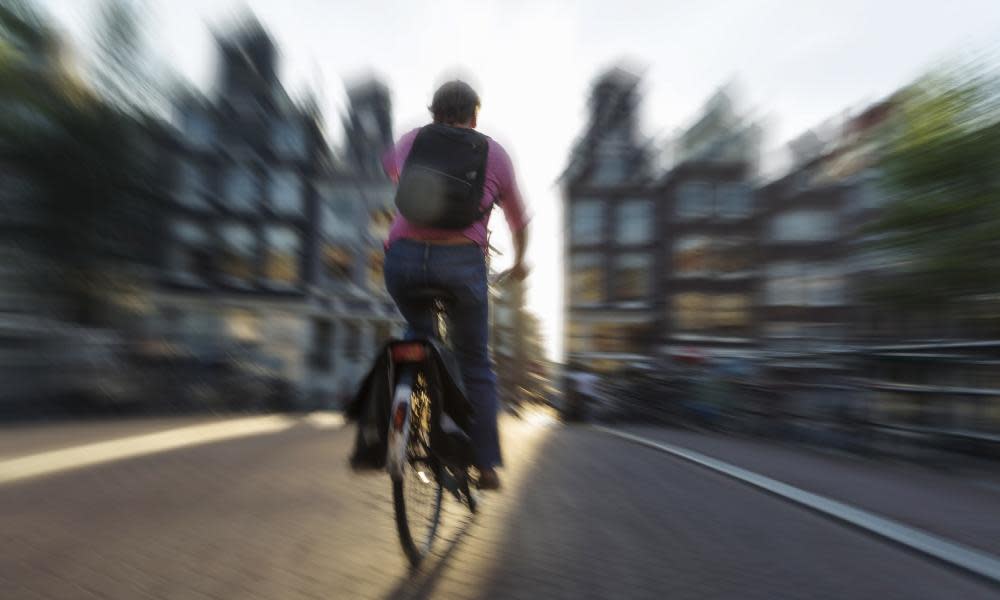Older men on e-bikes behind rising death toll among Dutch cyclists

The deaths of men over 65 using electric bikes on Dutch roads have caused the number of cycling fatalities in the country to surpass the people killed in cars.
Official figures from the Netherlands’ central bureau of statistics show a near doubling of deaths on electric bikes in the last 12 months, three-quarters of which involved men of 65 years or over.
In 2017, 206 cyclists were killed in the Netherlands, 17 more than in 2016 and the highest number in 10 years. The same year 201 people lost their lives in cars (30 fewer than the previous year).
A quarter of the cyclists were on e-bikes, which have an integrated electric motor to propel cycles to speeds of around 20mph.
As of 2017, approximately 294,000 e-bikes had been sold in the Netherlands. Sales in the UK have been lagging although recent market research suggests 62% of those have been sold to people over the age of 55.
Peter van der Knaap, director of the Dutch Road Safety Research Foundation, said older men were too confident in their ability not only to cycle at the speeds e-bikes make possible but also to mount or dismount the bike in the first place.
“We know that simple accidents, including fatalities, can often be attributed to bad road surface,” Van der Knaap said. “We should not underestimate how many accidents happen among the elderly when getting on and off an e-bike. Such a bicycle is heavier than a regular one. Sometimes the problem starts because some older people do not take into account that their own physical possibilities are reduced.”
The rise in deaths of cyclists is also being attributed to the increased popularity of the mode of transport. The Dutch government has led the way in laying down the right infrastructure, from heated cycle paths, to fast lanes.
Jaap Kamminga, from the Dutch cycling association, the Fietsersbond, said: “Of course, every dead person is one too many. But if you look at how much more we have all started cycling, especially the elderly, then the Netherlands can congratulate itself. Cycling is healthy, we must continue to promote that.”
The figures show that the increase in deaths of cyclists occurred only among men, from 125 in 2016 to 148 in 2017. Among women, the number of fatalities on the bicycle decreased slightly, from 64 in 2016 to 58 in 2017.
The number of e-bike victims among men went from 20 in 2016 to 38 in 2017. Of those men aged over 65, the number of e-bike deaths doubled, from 15 in 2016 to 31 in 2017.
The Fietsersbond (Cyclists’ union) wants the government to make funding available for e-bike training, while the Dutch road safety authority is seeking wider cycle lanes to deal with the growth in use.
Van der Knaap said: “Road authorities such as municipalities, provinces and central government must put more money into widening cycle paths and the quality of these.”

 Yahoo News
Yahoo News 
